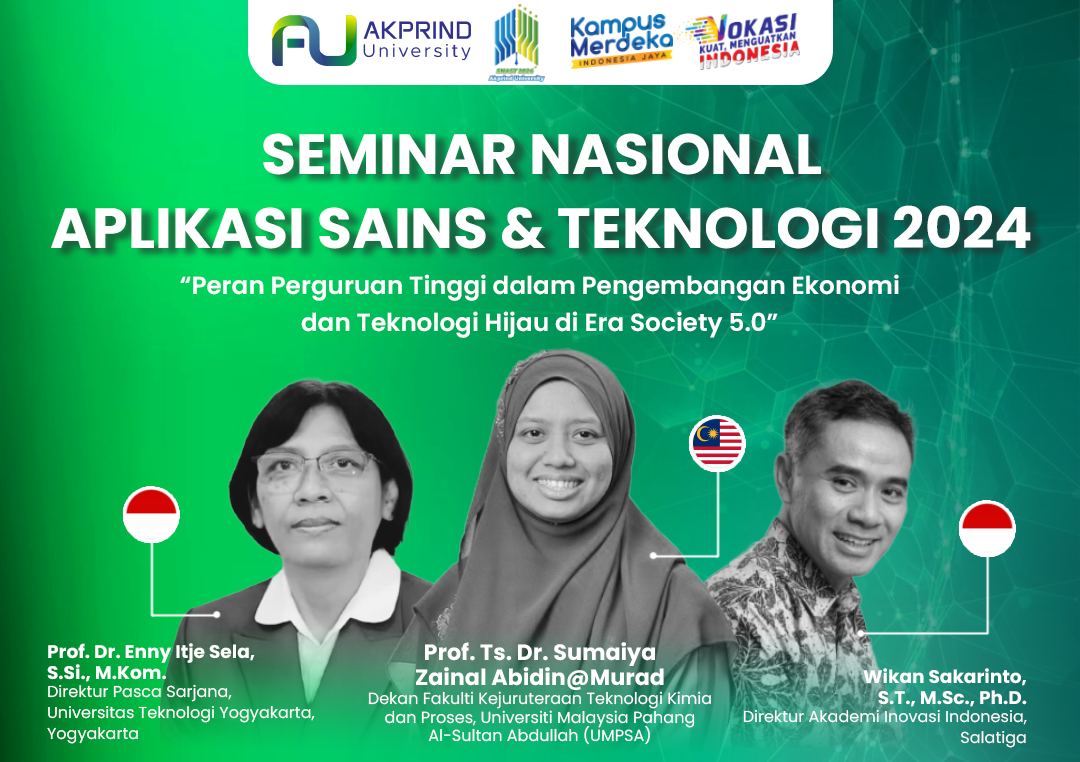PENGEMBANGAN SIMULASI VIRTUAL MESIN SIZING SEBAGAI ALTERNATIF METODE PEMBELAJARAN PRAKTIKUM TEKNOLOGI PERSIAPAN PERTENUNAN
DOI:
https://doi.org/10.34151/prosidingsnast.v1i1.4924Keywords:
learning model, sizing machine, virtual simulation, weaving preparation technologyAbstract
This study has developed a virtual simulation of a sizing machine as an alternative approach for practical learning in weaving preparation technology. This simulation was created by emulating the interface and functionalities of an industrial sizing machine. This study applies the five-stage Research and Development (R&D) ADDIE model developed by Robert Maribe Branch in 2009. The first stage is analysis, then design, development, implementation, and evaluation. The design and development method of this simulation employs graphic design applications CorelDraw, Adobe Illustrator, and Animate CC for component production, user interface assembly, encoding, movie testing, and publication. A Likert scale questionnaire with a 1–5 scale is used to evaluate the user experience and determine whether the simulation content is adequate. Using the validity and practicality criteria, the percentage value is then calculated from the entire score. According to the study's findings, the simulation sizing machine's concept and operation were given a 100% validity percentage with a very valid category, and the degree of fit between the simulation's features and the industry-standard sizing machine was given a 90% validity percentage with a very valid category. Additionally, with a percentage of 79.45%, the user evaluation results of the virtual simulation of the sizing machine indicated that this program was feasible to use. It is possible to employ the produced virtual simulation of the size machine as an alternate approach to hands-on learning in weaving preparation.
References
Ahmed, T., Mia, R., Ishraque Toki, G. F., Jahan, J., Hasan, M. M., Saleh Tasin, M. A., Farsee, M. S., & Ahmed, S. (2021). Evaluation of sizing parameters on cotton using the modified sizing agent. Cleaner Engineering and Technology, 5, 100320. https://doi.org/10.1016/j.clet.2021.100320
Alqurafi, M., Maqsood, E., & Alsaggaf, W. (2023). Effectiveness of a Virtual Laboratory to Develop the Skills of Identifying Fiber Type Using Chemical Methods 39 Effectiveness of a Virtual Laboratory to Develop the Skills of Identifying Fiber Type Using Chemical Methods. https://doi.org/10.4197/Comp.12-2.4
Chen, X. (2024). Effectiveness of Practical Teaching Participation for Improving the Students’ Employability. International Journal of Sociologies and Anthropologies Science Reviews, 4(3), 475–490. https://doi.org/10.60027/ijsasr.2024.4276
de Giorgio, A., Monetti, F. M., Maffei, A., Romero, M., & Wang, L. (2023). Adopting extended reality? A systematic review of manufacturing training and teaching applications. Journal of Manufacturing Systems, 71, 645–663. https://doi.org/https://doi.org/10.1016/j.jmsy.2023.10.016
Detyna, M., Granelli, F., & Betts, T. (2023). Exploring the Effect of a Collaborative Problem-Based Learning Simulation Within a Technology-Enhanced Learning Environment on Tutor Perceptions and Student Learning Outcomes. Journal of Education and Training Studies, 12(1), 53. https://doi.org/10.11114/jets.v12i1.6499
Fania, M., Iriani, T., & Arthur, R. (2024). IMPROVING VOCATIONAL STUDENT COMPETENCIES THROUGH INDUSTRIAL CLASS-BASED EXPERIANTIAL LEARNING. Jurnal PenSil, 13(1), 120–129. https://doi.org/10.21009/jpensil.v13i1.38151
Goswami, B. C. ., Anandjiwala, R. D. ., & Hall, D. M. . (2004). Textile sizing. Marcel Dekker.
HAKAN, Ö. (2018). Effects of sizing and yarn structural properties on the physical properties of combed and carded cotton ring yarns. Industria Textila, 69(02), 81–86. https://doi.org/10.35530/IT.069.02.1329
Kabir, S. M. F., & Haque, S. (2022). A Mini Review on the Innovations in Sizing of Cotton. Journal of Natural Fibers, 19(13), 6993–7007. https://doi.org/10.1080/15440478.2021.1941486
Kaldaras, L., Wang, K. D., Nardo, J. E., Price, A., Perkins, K., Wieman, C., & Salehi, S. (2024). Employing technology-enhanced feedback and scaffolding to support the development of deep science understanding using computer simulations. International Journal of STEM Education, 11(1), 30. https://doi.org/10.1186/s40594-024-00490-7
Park, J., Islam, R., King, C., Jiang, L., Peng, X., & Yalvac, B. (2024). Work in Progress: Virtual Reality for Manufacturing Equipment Training for Future Workforce Development. 2023 ASEE Annual Conference & Exposition Proceedings. https://doi.org/10.18260/1-2--44397
Richa Agarwal, Poornima U Kotehal, Sagar Bhadange, & Pritesh Shukla. (2024). Role of Simulation-Based Learning in Skill Development of Students: An Empirical Study in Context of ICT-Driven Education World. Journal of Informatics Education and Research. https://doi.org/10.52783/jier.v4i2.1117
Wei, H. (2024). The impact of strengthening practical teaching in vocational education on improving students’ employability. Applied Mathematics and Nonlinear Sciences, 9(1). https://doi.org/10.2478/amns-2024-2323
Wiana, W., & Ruhidawati, C. (2020). The Development of Virtual Textile Chemistry Laboratory in Learning Making Cellulose-Based Regeneration Fibers Based on Learning Paradigms in the Industrial Revolution 4.0 Era. International Journal of Psychosocial Rehabilitation, 24, 2020. http://texfiber.blogspot.com/p/viscose.
Yulia, Y., Arnomo, S. A., & Karnadi, V. (2024). PELATIHAN DESAIN GRAFIS BERBASIS VECTOR DAN BITMAP MENGGUNAKAN APLIKASI CORELDRAW DI SMK NASIONAL PADANG. PUAN INDONESIA, 5(2), 405–410. https://doi.org/10.37296/jpi.v5i2.194
Yusof, R., James, S., Ng, J. Q., Roslan, N. Bin, Ng, S. L., Sathiaselan, N. A., Qureshi, Mohd. S., & Kee, D. M. H. (2024). Assessing the Influence of Practical Training on Perceived Employability Among Public University Students in Malaysia. Asian Pacific Journal of Management and Education, 7(2), 43–57. https://doi.org/10.32535/apjme.v7i2.3014
Downloads
Published
Issue
Section
License
Copyright (c) 2024 Verawati Nurazizah

This work is licensed under a Creative Commons Attribution-ShareAlike 4.0 International License.







